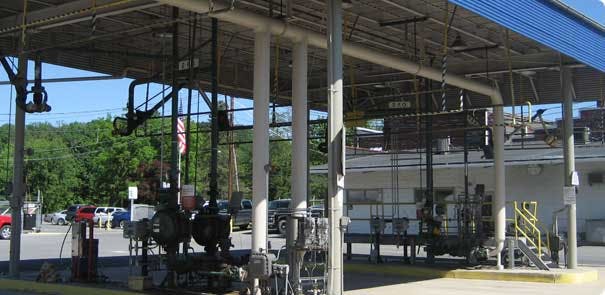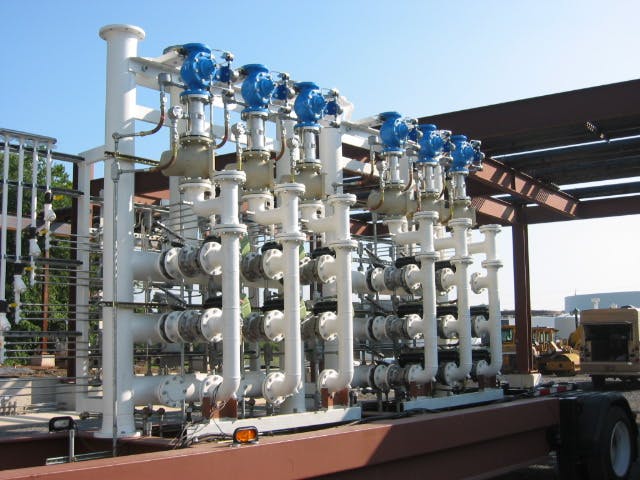Petroleum goes by many names: liquefied petroleum gas, LP gas, LPG, propane (C3H8), butane (C4H10), and HD-5. But regardless of what you call it, petroleum is one of the most important fuels around — and this means it needs to be managed properly. Flow meters are tools used to measure liquids and gasses, but they can’t measure accurately unless they are calibrated. Calibration generally happens right after a flow meter is manufactured. However, over time flow meters go astray and need to be recalibrated — a job which should be performed by trained professionals to ensure accuracy.
Importance of Flow Meter Calibration

Here in the United States the standard for measurements is decided upon by the National Institute of Standards and Technology (NIST). Other countries and regions of the world have different standards they use. The important thing is for everyone within the same geographic area to use the same standard to make things easier. It’s basically the same as various countries using different kinds of currency — every U.S. state uses the same currency, but other countries use their own currency which will need to be converted. It wouldn’t be convenient if everyone in the same region used different standards.
Flow Meter Calibration vs. Recalibration
As previously mentioned, calibration typically occurs right after the manufacture of a scale or meter of some sort. For flow meters, this can either be done in-house by the manufacturer or it can be outsourced to be done at an external location. It all depends on whether or not the manufacturer has the resources available to calibrate the meters they produce.
Flow meter recalibration fixes the change in the meter over time as it strays farther from the standard. Just as your bathroom scale needs to be recalibrated every few months, your flow meters need to be recalibrated as well. Your bathroom scale saying you’re a pound or two heavier than you are might seem like a big deal, but it’s nothing compared to the potential loss of revenue from an uncalibrated flow meter. Even small changes compared to the standard can have major negative impacts when scaled up to operational sizes.
When your flow meters need to be recalibrated, you typically have three options. The first is sending the meter back to the manufacturer for recalibration, but this will be dependent on whether or not they performed the initial calibration. The second option is to send the meter to a third party location to be calibrated — this may be more expensive than sending it to the manufacturer. And the third option is to have a mobile flow meter recalibration service come to your place of business and test the meter on-site. This final option has the added benefit of taking your flow meter out of commission for the shortest amount of time.
Four Ways to Recalibrate a Flow Meter

There are four main ways in which a flow meter is calibrated: master meter, gravimetric, volumetric prover, and piston prover recalibration. Each recalibration method has its own strengths and weaknesses.
Master Meter Recalibration
Recalibration through the use of a master meter is arguably the most basic form of meter recalibration. A master meter is a flow meter which has been set according to the NIST standard. It is then taken to the site of the test meter and tested in the current conditions. Once the test has been recorded, the original meter is adjusted to match those of the master meter under the same conditions.
Benefits of this recalibration method are that it can be performed on-site and the meter which has been recalibrated will be accurate under the exact conditions in which it is being used. The drawback is that because the meter is being recalibrated for those conditions specifically, it may need recalibration if the conditions it works in are changed.
Gravimetric Recalibration
Gravimetric recalibration is a bit more advanced. This method takes a small amount of the liquid being measured and has it placed in a test meter. The weight of the liquid and time of the test are then measured to determine the flow. Basically, as long as you know how much liquid there is, and how long it took to pass through the meter, you can determine the flow rate. The original meter is then calibrated accordingly so this flow rate matches the standard.
Volumetric Prover Recalibration

Volumetric prover recalibration compares the volume of a liquid by filling a container of a known volume and comparing it to the volume recorded on the flow meter. Since the volume is known, the time it takes to fill can be used to calculate the flow rate. This method is another fairly basic way to calculate flow, along with using a master meter. One of the major differences between these two methods is that volumetric provers start and stop with standing liquid rather than pre-flowing liquid.
Piston Prover Recalibration
Piston prover recalibration works sort of like a combination of gravimetric recalibration, in that a small amount of the measured liquid is placed in a test environment, and volumetric prover recalibration, this time a piston tube. The diameter and length of the piston are then used to determine fluid volume, which is in turn used to calibrate the affected meter. If you know how much fluid is in a certain area under a certain pressure, you can determine what the flow rate should be.
Conclusion
With a major fuel source like petroleum, it is vitally important to receive proper measurements from your flow meters. Calibration and recalibration are how to ensure your flow meters are giving out accurate readings. And there are different ways to recalibrate your meters depending on the situations within which they are used and how big of an impact down time would have on your operations.
LM&C Calibration and Recalibration
Whether you have flow meters which don’t appear to be measuring your product correctly, or it’s been a while since they were last recalibrated (if they ever have been) then contact LM&C today. We can recalibrate your misaligned flow meters and help you come up with a preventative maintenance plan so that they don’t stray off the standard in the future.



